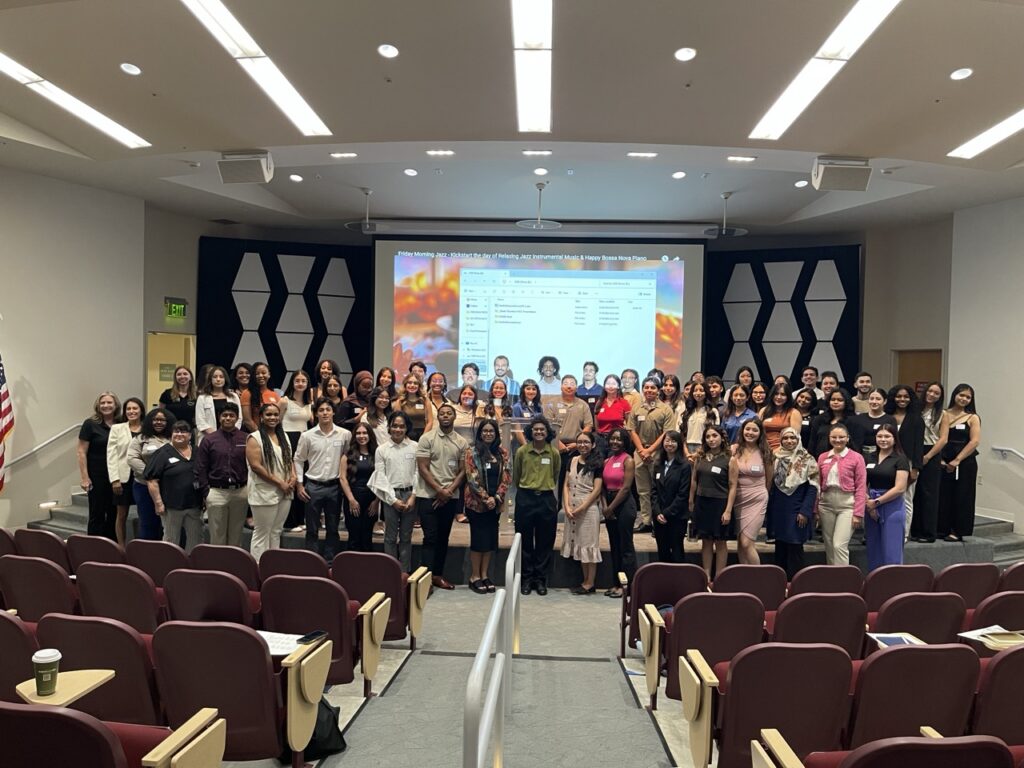Originally published in The Press Enterprise, part of our Inspiring Vibrant Health Column.
It’s an all-too-common scenario when trying to find care for a health concern. A loved one may need a same-day appointment with their primary care physician for cold or flu symptoms, but the next appointment is not for another week. Or you need to see a specialist for an urgent concern, but there is no availability until next month.
Whether seeking care from a family physician, mental health clinician, cardiologist or an orthopedist, long waits for a needed visit are not uncommon in Southern California. Many of us and our family members question why it takes so long to simply get needed health care services.
As it turns out, we simply don’t have enough physicians, specialists and other health care providers to meet the needs of our region. And, even compared to our coastal neighbors, the Inland Empire is particularly strained when it comes to resident-to-physician ratios.
According to the University of Wisconsin Population Health Institute’s County Health Rankings, there are 1,330 people for every one primary care physician, or PCP, across the United States. In California, that number is slightly better with one PCP per 1,230 residents. However, in San Bernardino County, for every one PCP, there are 1,700 residents and even higher in Riverside County, with 1:2,160.
This same trend extends beyond primary care services to medical specialists of various types. In Los Angeles County, there is one mental health provider per 260 people, yet just one provider per 340 San Bernardino County residents and per 370 Riverside County residents.
To exacerbate this challenge, the Inland Empire also remains one of the fastest growing regions in the state. According to 2024 figures, it was estimated that the combined population of Riverside and San Bernardino counties grew by 67,000 over a 12-month period. Unfortunately, as the region’s population has expanded, growth in physicians has not kept pace.
Not only does continued growth impact the need for physicians but also the need for certificated and technical health care practitioners including nurses, dental assistants and phlebotomists. According to a 2024 Inland Public Health Workforce Report, associate and certificate-level health care jobs will increase by 7.6% and add 3,638 jobs over the next five years.
Clearly there is much room for improvement, and additional resources and concentrated effort will be required to improve numbers and health access across the region. Fortunately, there are several local organizations addressing the need to build a stronger health care workforce pipeline.
The Inland Empire has a handful of prominent medical schools, including UC Riverside, Loma Linda University, and California University of Science and Medicine. Based in Colton, CUSM is working to increase the number of newly trained physicians who will dedicate their careers to the Inland Empire.
“At CUSM, our admissions process gives preference to students from the region, acknowledging that individuals are more likely to practice medicine where they have roots and receive their training,” said Zohray Talib, MD, executive vice dean for education and professor of medicine, and medical education. “Our curriculum integrates community-based learning and clinical experiences, which, combined with successful residency matches in the area, strengthens the local physician workforce.”
In November 2024, Rep. Pete Aguilar announced a $5 million grant to San Bernardino based SAC Health System’s Teaching Health Center Graduate Medical Education programs in family medicine, pediatrics and psychology. The funding from the U.S. Department of Health and Human Services will support expanded primary care residency programs aimed at equipping additional future doctors to meet the needs of the Inland Empire’s diverse population.
Ensuring the region is training qualified physicians is critical to the future workforce pipeline, but attracting young people from the Inland Empire to develop a desire to work in the field of health care is also essential.
Health Career Connections is a national nonprofit organization that inspires and empowers undergraduate students and recent graduates to pursue health care and public health careers. Focusing on first generation college students and those who come from low-middle income backgrounds, HCC provides paid internships and hands-on experiences to develop skills and expose students to real-world healthcare environments.
The nonprofit partners with local universities and community colleges, including Loma Linda University and UC Riverside, and Cal State San Bernardino. HCC alumni include students who are now leaders at Kaiser Permanente, USC and Reach Out.

“Our efforts aim to connect local talent with the health sector, ensuring that organizations in the region have access to skilled, passionate professionals who understand their communities and are prepared to support their missions,” said Vicky Bocanegra, Southern California regional manager for HCC.
Upland-based nonprofit organization Reach Out is dedicated to building a skilled and culturally competent health work force for the Inland Empire. Reach Out is now focusing on establishing Pacific Empire College, developed to train and deploy Community Health Workers, or CHWs, throughout the Inland Empire. CHW’s are trained community members who bridge language and cultural disconnects to help uncover underlying health issues, provide education and connect underserved individuals with the healthcare they need.
“By equipping CHWs with the skills needed to navigate complex health care environments, we are strengthening the workforce, delivering employment opportunities, and reshaping the overall health outlook of the Inland Empire,” said Diana Fox, Reach Out executive director.
Despite these efforts, the nation’s health care sector is facing threats of reduced funding at federal and state levels which could further reduce the availability of needed health care training and services within Riverside and San Bernardino counties.
So, next time you are struggling to get that doctor’s appointment, you might just want to call your children or grandchildren to encourage them to consider a career in health care.
